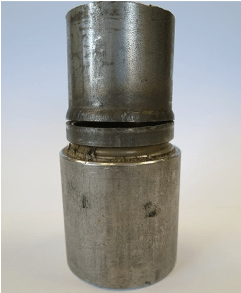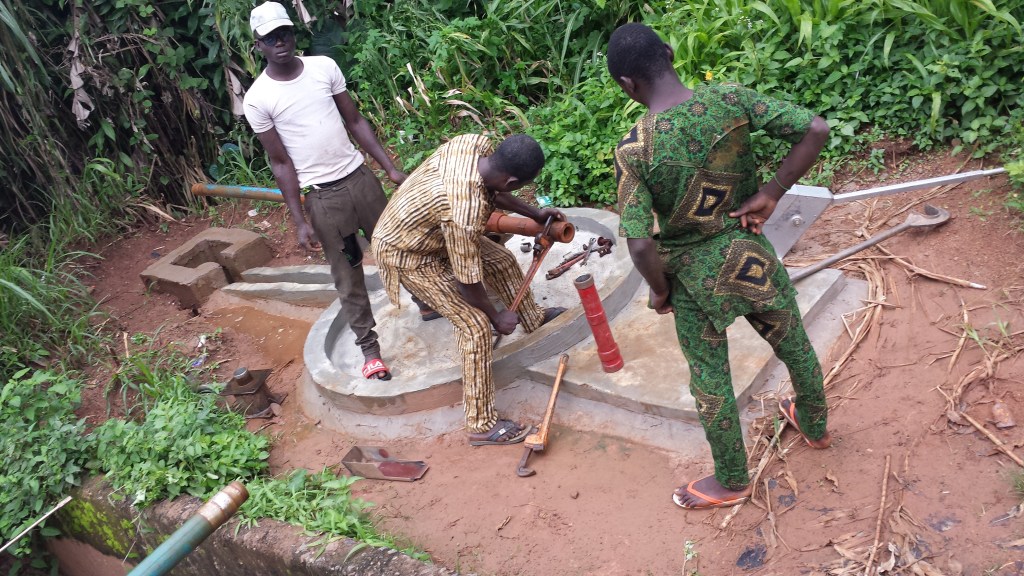A summary of discussions at the RWSN webinar (April 2022)
Handpump reliance, rapid corrosion, component quality and supply chains in sub-Saharan Africa (SSA) were the subject of the trilogy of reports from the ‘Stop the Rot’ published in 2022. The research looked specifically at the main public domain handpumps – the India Mark Pump, and the Afridev Pump, and drew learnings from the Zimbabwe Bush Pump. A RWSN-hosted webinar in April 2022 presented the findings, heard from seven panellists and the chair as well as the audience. So, in a nutshell, what was discussed? With this blog I share with you a number of stakeholder perspectives as the Stop the Rot Action Group to tackle handpump corrosion and improve component quality is established.

Donald John MacAllister (British Geological Survey – BGS) recognised Stop the Rot complements on the work of the BGS Hidden Crisis project, which investigated the underlying factors of handpump borehole functionality in SSA. It is great to see the new estimates of the number of people relying on handpump boreholes, and how important they will remain in the future, and have light shone on the corrosion problem that many rural communities face. In addition, it is useful for the wider causes such as procurement modes and supply chains issues to be considered, areas that require more. From a BGS perspective, there is interest in looking at where there are risks for corrosion across SSA, and what can be done to alleviate the problem, given that we know that handpumps will remain important in the future.
Levy Museteka (Water Resources Management Authority – WARMA, Zambia) explained that the country has suffered from handpump corrosion, especially in the north, where naturally low pH, compounded with the use of galvanised iron (GI) pipes led to most of the pumps failing due to corrosion. When he worked in the north-western province, Levy mentioned that there used to be an annual budget for rehabilitation, with most of that money used to replace GI pipes, returning activity every year. If there is no proper plan for replacement, after a few years you have a “graveyard of boreholes”. Zambia currently lacks regulations regarding pump materials. Switching handpump pipes from GI to stainless steel would come at a significantly higher capital cost, and any changes would require advocacy with the multi-lateral agencies in the country.

Duncan Marsh (Pump Aid and Beyond Water) is involved in an organisation developing professional repair and maintenance services in Malawi, where there is a very high rate of non-functionality of handpumps. The shift in a ‘payment by results model for asset management’ amongst some donors, involves being paid to increase pump functionality. The quality and costing of spare parts is vital in such a model, whereby service providers and governments, need to be able to forecast repair and maintenance costs over a multi-annual basis. Such forecasts are used in contracts between the service provider and government to provide a minimum guaranteed uptime (functioning time) of water supply services. Rapidly corroding spare parts increase the servicing costs considerably, and there is also less certainty with respect to providing that sustainable service. From the perspective of Beyond Water, it is essential that spare parts imports are regulated, and budgeting of repair costs is accurate over a number of years. Poor quality spare parts have an associated opportunity cost, but regulation and increased quality spares also have associated costs.
Christopher Lindsay (IAPMO Group) IAPMO, is an industry trade association, formed by water officials who recognised problems with the way that the water infrastructure was coming together, and now develops standards, provides training and runs testing and certification labs around the world. The Stop the Rot initiative is dealing with performance problems in a complex ecosystem. Christopher states that it is time to engage industry processes better; to protect the quality and performance of handpumps. This involves three major steps: (1) standards development organisation to develop international standards for these pumps (recognising the work by Skat and RWSN to date); (2) adoption of the international technical standard into national regulations; (3) for products that impact public health and safety, there is need for a layer which formalises testing and certification requirements. With these three steps in place, it is then possible to focus on local enforcement mechanisms and ultimately increase the market share for quality products.
Ron Sloots (TGS Water Ltd and WE Consult, Uganda): TGS water is currently rehabilitating about 60 boreholes in Uganda, and each one of them has a corrosion issue. All of the GI pipes are being replaced with stainless steel, in line with the Ugandan government policy mandatory installation of stainless steel pipes. To address the issues raised by Stop the Rot, there is need for a stronger involvement and larger responsibility of the donor community. Unfortunately, existing standards and specifications, are not always used. One problem is that the budgets prepared by certain NGOs are not very realistic, and risks, such as of drilling dry boreholes, or facing deeper water tables, or the water chemistry, tend to be transferred to the contractor, despite the fact that they cannot do anything about these risks. However, NGOs operate in a very competitive environment and rely on money from donors. And so, they quote very low, and do not include the cost of the risks, which are simply transferred to the contractors. Meanwhile, many donor organisations are not even aware of these challenges and just follow and engage the NGOs. The donor agencies need to take responsibility, and put more effort into project design – don’t just find a project but make sure that you know everything about the area where they are taking place, and influence so that standards are used.

Abdou Aziz Linjouom (Consultant, Cameroon): the phenomenon of handpump corrosion is a reality in Cameroon, with handpumps an important source of drinking water for rural dwellers, as well as those who lack piped water supplies in urban areas and for institutions such as schools and hospitals. Following discussions with numerous stakeholders in Cameroon, notably the enterprises import and sell handpump components, it is clear that there is a lack of knowledge about material standards. Further, those installing the pumps have also stated that component quality is often poor. This has negative consequences for handpump users, and can affect water quality. Users have explained that while for the first months, they are satisfied with the source, that after a few months, the water quality deteriorates with rust from the pump. This has a knock on effect on use of the source, and ultimately upon children. There is need to fully quantify and qualify the extent of the corrosion problem, and invest in training to improve the situation, as well as monitor sources.
Steven Kumwenda (Baseflow, Malawi) concurs with the findings of Stop the Rot. Borehole forensics is a methodical way of trying to investigate issues affecting a borehole, from the boreholes pump parts, and yield as well as siting. Baseflow has undertaken forensics on more than 200 boreholes in Malawi. The handpump corrosion due to low pH that has been found in the Stop the Rot study is rare, but corrosion as a result of highly saline wells does occur. However, it has also been observed, that the less a handpump is used, the more serious the iron problem becomes. In Malawi, if you find a borehole affected by iron, the communities still use it, and the more they use it, the clearer the water becomes, with the water mostly reddish early in the morning. Highly saline boreholes will rarely be used, and so salinity is this a bigger issue for Malawi than iron. Over the years borehole drillers have mushroomed in the country, hundreds and hundreds of boreholes drilled. However, a cohort of boreholes do not last long, breaking down within and one or two years.
Malawi faces a problem whereby boreholes are not being drilled to the standards required, which is further compounded by the fact that, unlike other construction sub-sectors, the borehole drilling sector does not follow the accepted arrangement of having an independent consultant (in this case, a hydrogeologist) for quality control and ensuring adherence to contractual requirements and standards. Target numbers are a key part of the problem, with NGOs and donors wanting to see numbers of handpump boreholes. A well supervised drilling process should take no longer than two days to complete, which also allows for data collection, taking measurements and checking the quality of the installed parts. However, all of this is rushed. While this issue has been raised, checks that standards for drilling and spare parts are being complied with are still lacking. This presentation needs to be shared at higher policy levels, and regionally, there is need to look at mechanisms that can improve drilling quality and the quality of handpump parts.
Peter Harvey (UNICEF), chaired the webinar recognising that change takes time. There are many common threads from the panellists, in terms of professionalisation, not just going for the lowest cost, ensuring quality and giving the necessary attention to that. With the SDGs and their focus on sustainable services, there is no excuse to be making the mistakes of old. Finance is important – not just for maintenance, but also for the regulatory framework. There is need for the consideration of realistic per capita costs of delivering sustainable services, while true value for money means the value of an ongoing service rather than static infrastructure that may not function after some time.
While many professionals in the sector are aware of this problem, not everybody is. What we hope from Stop the Rot in the future, is to see how we can work collectively, communicate better and advocate for changes with decision makers.
If you would like to know more about, or engage with the ongoing Stop the Rot initiative, please contact info@rural-water-supply.net or ask@ask-for-water.ch
